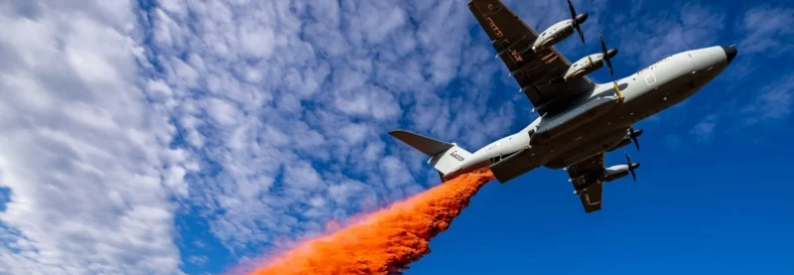A400M Firefighting Tests Prove 20,000-Litre Drop Edge

Airbus has moved a step closer to turning its A400M military transporter into a frontline aerial firefighter after the aircraft completed a new round of independently monitored water-drop trials at Nîmes-Garons in southern France. Fitted with Airbus’ Roll-on/Roll-off modular kit, the turboprop performed multiple passes in April under the supervision of Entente-Valabre’s Test and Research Centre (CEREN), a globally recognised authority for evaluating forest-fire equipment and training. Engineers placed hundreds of calibrated cups in a grid across a section of the airfield so analysts could measure exactly how much retardant reached each point and how evenly the pattern spread. Early findings show the aircraft consistently hit its target zone while flying lower than 30 metres and at roughly 230 km/h, replicating the demanding profiles used during real wildfire sorties.
The centrepiece of the concept is a self-contained tank system that slides into the cargo hold without altering the airframe. Because crews can install or remove the module in hours, any aircraft in an A400M fleet could be reassigned to firefighting duties at short notice—an attractive option for governments that need extra capacity only during peak fire season. Once airborne, the kit can release up to 20,000 litres of water or chemical retardant through two pipes mounted on the rear ramp. Refilling on the ground takes less than ten minutes with standard pumps, allowing faster turnaround than many dedicated water bombers.
Jo Müller, who heads sustainability and communications at Airbus Defense and Space, said the successful French campaign builds on initial drops conducted in Spain in 2022 and confirms that the A400M can form the centre of a broader wildfire-response ecosystem spanning satellites, drones and ground assets. He added that the aircraft’s rough-field performance offers another operational benefit: “Because the A400M can operate from short or unpaved strips, fire crews can stage much closer to the perimeter, shortening ferry times and boosting daily sortie counts.”
The platform’s 20,000-litre payload dwarfs the roughly 6,000 litres carried by the iconic Canadair CL-415. The latter retains one key advantage—its ability to skim lakes and refill on the fly—but Airbus believes the A400M’s speed, range, payload and multi-role flexibility offset that limitation, especially in regions where large bodies of water are scarce or fires occur at altitude. In addition, the A400M’s four-engine design lets it cruise at jet-like speeds, reposition between theatres rapidly and perform missions such as medical evacuation, cargo delivery or troop transport when flames are not raging.
Regulatory certification and customer funding will determine when the system reaches operational status, yet several European nations and export operators already fly the A400M for military duties, giving Airbus a ready customer base. As fire seasons lengthen under climate pressure and emergency agencies search for scalable solutions, a heavy-lift aircraft that can transform overnight into a water bomber could fill a growing capability gap. With the Nîmes tests validating drop accuracy and coverage, Airbus now plans further trials focused on night operations, varied retardant mixes and integration with advanced mapping tools, putting the 20,000-litre A400M firmly on the radar of firefighting strategists worldwide.
Related News: https://airguide.info/category/air-travel-business/airline-finance/
